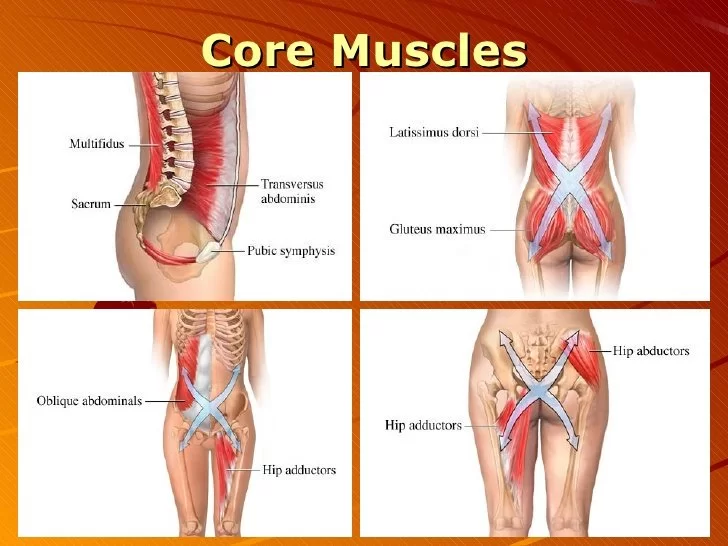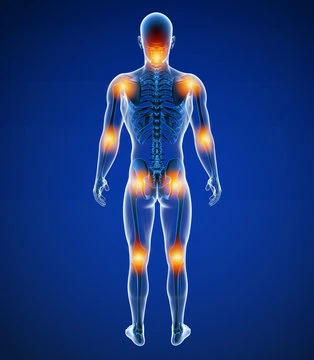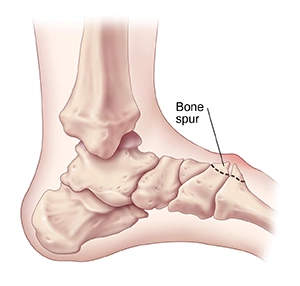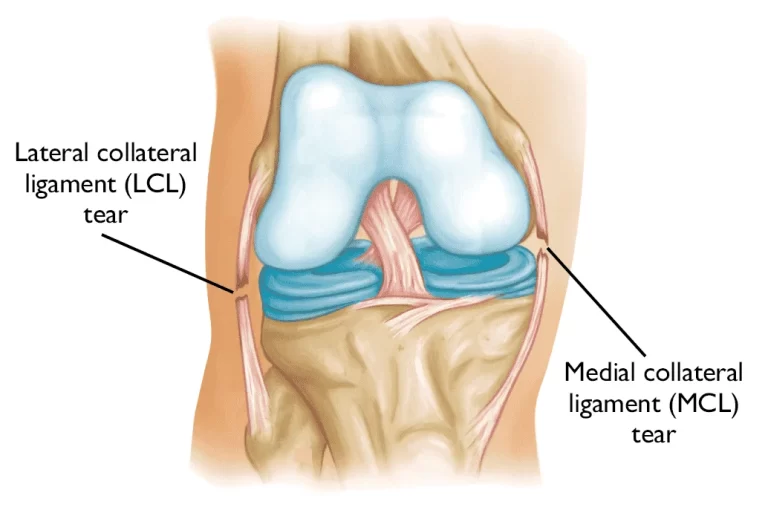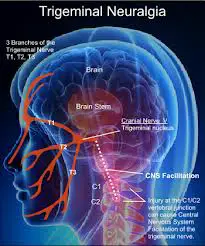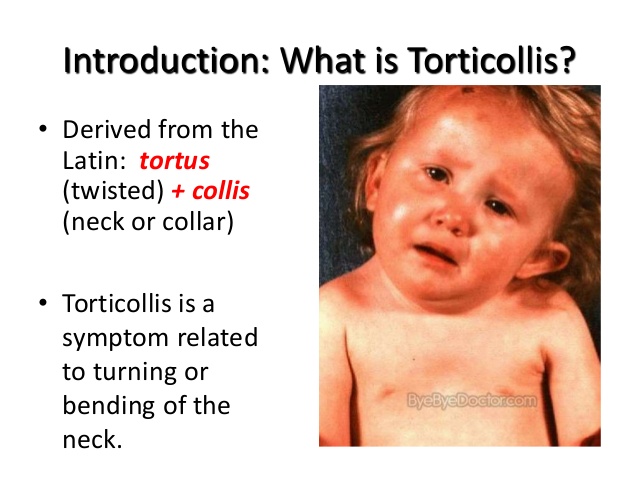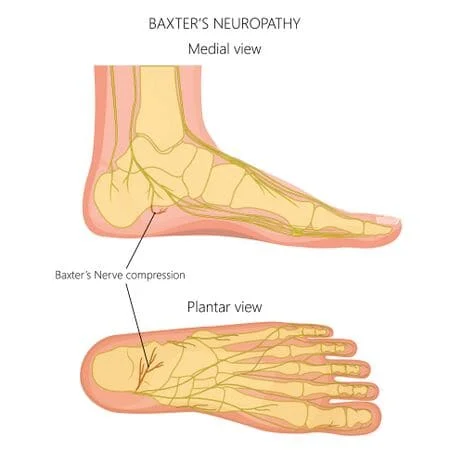Core Muscle Repair Rehabilitation
Core muscle repair rehabilitation is one type of physical therapy used to treat injuries to the core muscles. The term “core muscles” refers to the muscles that support the spine and pelvis. They are essential for stability, balance, mobility, and posture.
The term “core muscles” refers to the group of muscles that support the spine and pelvis. They are essential for posture, balance, and stability. Injuries or weakness in the core muscles can lead to pain, instability, and difficulty carrying out regular activities.
The core muscles can be injured in many different ways, and each form of injury will need a different rehabilitation strategy. If you are experiencing pain in your core muscles, you must see a doctor or physical therapist to receive a diagnosis and develop a treatment plan.
The basis of general health, fitness, and well-being is a strong core. You may move with more force and control, avoid accidents, and improve your posture by being aware of and strengthening your core muscles.
What are the Core Muscles?
When the arms and legs are moving functionally, the trunk is supported by the core, the center of our body. From this angle, it becomes clear that the core is made up of the following:
- The muscles support the hips.
- The collection of muscles that make up the torso, is located in the front, sides, and back of the body.
- The muscles that stabilize the shoulder.
Which Muscles form your Core?
- The rectus abdominis, or “six-pack,” as well as the obliques, or “side abs,” and the transversus abdominis, or “deepest abdominal muscle,” are examples of the abdominal muscles. They support rotation, flexion (bending forward), and pulling the abdomen inside towards the spine.
- The quadratus lumborum, a deep muscle, the multifidus, which supports the spine, and the erector spinae, which runs down the spine, are examples of back muscles. They are responsible for maintaining proper posture, resisting flexion, and extending (straightening) the back.
- Hip flexors, hamstrings, and glutes are examples of hip muscles. They facilitate mobility and power transfer by stabilizing the pelvis and linking the core to the legs.
Why is it Essential to have Core Muscles?
- Stability: Your spine and pelvis are stabilized by a strong core, which functions as a corset. This helps you avoid injuries, keep good posture, and carry out daily tasks painlessly.
- Movement: Almost all of your movements, including walking, jogging, lifting things, and engaging in sports, use your core muscles. Balance, coordination, and power are all enhanced by having strong core muscles.
- Posture: Maintaining proper posture and standing tall with a strong core helps you avoid slouching and relieves strain on your neck and back.
- Performance: You can perform better as an athlete when you have strong core muscles when you run, leap, and throw.
Injury to the Core Muscles
There are numerous kinds of injuries to the core muscles, and each one will require a distinct rehabilitation plan. Typical injuries to the core muscles include:
- Strains: Tears in the muscular fibers are known as strains.
- Sprains: Tears in the ligaments that attach muscles to bones are called sprains.
- Herniated discs: These happen when the discs in the spine that lie between the vertebrae swell or rupture.
What is Core Muscle Repair?
Core muscle repair is a surgical operation that treats core muscular injuries, often known as sports hernias or athletic pubalgia. It includes suturing the healthy ends of torn or injured abdominal core muscles, most notably the rectus abdominis.
Sometimes your surgeon may also do an adductor tenotomy for any of the following reasons:
- To relieve inner thigh discomfort after core muscle restoration surgery.
- For further stability
- To avoid tear and hernia recurrence.
An adductor tenotomy involves releasing your inner thigh muscle, or adductor longus, by cutting the tendinous component of the adductor longus linked to the pubis.
After core muscle repair rehabilitation is especially advised for athletes who participate in sports that require significant twisting and repetitive action, such as soccer, basketball, hockey, jogging, and football. It is typically conducted in men since they are more prone to core muscle injuries during sports.
What are the Signs and Symptoms of core muscle repair?
Core muscle restoration is advised for the treatment of athletic pubalgia and sports hernias. You are eligible for core muscle regeneration if you have:
- A core muscular injury, such as a grade 3 or full rupture of the rectus abdominis muscle, cannot be treated conservatively.
- A significant core muscle injury needs prompt treatment.
Other signs could include:
- There has been severe trauma.
- An abdominal hernia.
- To address a post-pregnancy rectus abdominis muscle deficiency characterized by muscular wall relaxation, weakness, displacement, or separation.
Core Muscle Repair Procedure
Core muscle restoration can be done openly or using an endoscope.
The surgical process mainly following steps:
- You lie supine on the surgical table.
- The surgeon decides whether to perform local or general anesthesia depending on the candidate’s age, overall health, and medical history.
- The incision location has been identified and marked.
Types of Surgery
Open Surgery
- To examine and access the surgery site, your surgeon will make a single lengthy incision of around 5-10 cm.
- Your surgeon retracts the groin muscles to provide access to the injured region. The muscle fibers’ healthy ends, often the rectus abdominis’s lower end, are sutured.
- A synthetic mesh can be inserted and stitched over the injured region to add strength and support.
- Your surgeon will close the abdominal wall incision with sutures.
Endoscopic or Minimally Invasive Surgery
In an endoscopic core muscle repair, one or more tiny incisions are performed at the designated spot. Endoscopes and other surgical equipment are introduced through these incisions. The endoscope is a long, thin, and flexible tube with a small video camera and light at the end.
Based on the pictures produced by the endoscope, the torn muscle is detected and repaired using one of the following methods:
- By sewing or suturing its healthy ends together. If your surgeon discovers that your groin’s little inguinal nerve is damaged or scarred, he or she may perform an inguinal neurectomy. The inguinal nerve is cut during surgery to alleviate discomfort.
- Adductor tenotomy may also be performed, which involves cutting the tendon that connects your inner thigh muscle to the pubis. After the core muscle is restored, the incision is closed with either non-absorbable or dissolvable sutures.
Endoscopic treatment requires less recovery time than open surgery does. Other advantages of keyhole surgery may include:
- Smaller scar
- Minimal pain.
- There is a lower chance of infection.
Core Muscle Rehabilitation
Core Muscle Rehabilitation depends on the nature of the injury including:
- What led to it? For what duration have you been undergoing symptoms?
- Your degree of discomfort: Is it dull or sharp? Does it get worse when you do specific things?
- Your degree of fitness right: Do you lead an active or passive lifestyle?
- Any more specific medical conditions: Do you have any medical issues that might interfere with your recovery?
Conservative Rehabilitation Protocol
Conservative Rehabilitation of the core muscles usually consists of the following:
- Rest: It’s critical to give your muscles time to repair.
- Ice: This has the potential to lessen inflammation and pain.
- Heat: This can help to promote flexibility and blood flow.
- Stretching: This can aid in increasing the range of motion.
- Exercises for strengthening: These will assist in regaining the muscles in the core.
Functional exercises can help you become more capable of carrying out daily tasks.
Core Muscle Repair Rehabilitation Protocol
Recovery and Post-surgical Care
The general postoperative care guidelines include:
- You may feel pain, swelling, numbness, or weakness at or around the surgical site. Your surgeon will prescribe drugs to help comfort you.
- Because it is not a significant operation, you should be able to walk the day following the procedure. Keep the incision clean and dry.
Your surgeon will provide you with self-care guidelines, including nutrition, wound, and bathing care. - You can progressively resume your usual routines. Strenuous activities should be avoided until you speak with your physician.
- Depending on the severity of the damage and the type of surgery performed, complete recovery might take 3-8 weeks or even longer.
- You will be discharged the same day your core muscles are repaired. Make sure you have someone drive you home because the anesthesia and pain drugs might make you sleepy.
- Rehabilitation following core muscle repair will focus on the gradual return to your activities of daily living which will be progressed on an individual basis by your physiotherapist
First Week
- Breathing exercises to reduce the probability of respiratory issues following your surgery
- Positioning strategies might assist relieve any pain you may be feeling.
- Exercises to improve lower and upper limb range of motion.
- Simple strength workouts.
- Gradual mobilization, which includes brief walks and easy transfers.
- Abdominal strengthening exercises.
- Pelvic tilt exercises can help support your lower back.
- Postural recommendations for various situations, including sitting, lying, and transferring.
- If there is swelling surrounding the incision, apply cryotherapy (ice).
2nd to 4th Week
- Your post-surgery symptoms should now be lessened, allowing you to be more active in continuing your rehabilitation with Physiotherapist
- Progress of abdominal strengthening workouts
- Progression of range of motion exercises
- Simple cardiovascular activity.
- Techniques for lifting lightweight items. Heavy things should not be lifted for at least six months after the procedure.
5th Weeks and After 5th Weeks
- You should now be back to your usual exercise levels. Your physiotherapist will now focus on assisting you with rehabilitation tailored to your functional requirements.
- Advice for Pacing Your Rest and Activities
- Progression of all workouts presented, particularly abdominal-based ones.
- Specific cardiovascular activity geared to your regular daily routine.
- Preparation for post-rehabilitation and how to maintain fitness levels
- Advice on How to Reduce the Risk of Re-injury
Exercises after Core Muscle Repair
Here is some general advice about exercising following core muscle repair:
In the early stages:
- Focus on relaxation and healing: This is essential for optimal tissue restoration.
- Light exercise: Short walks, easy stretches, and light breathing exercises might be beneficial.
- Avoid intense activities, including anything that causes pain or discomfort.
As you progress
- Progressively raise your activity level. Begin with mild workouts and progressively increase the intensity and duration as you tolerate them.
- Listen to your body. Stop if you feel any pain.
- Focus on core strengthening activities to help improve the strength and stability of your core muscles. Examples include pelvic tilts, dead bugs, and planks.
- Progress to functional exercises, which simulate everyday motions and help you return to your usual activities.
The Goal of Exercises
- The primary goal of exercise is for each patient to show the correct technique and self-assurance so that they can advance to a self-directed home exercise plan.
- The next program will incorporate flexibility training, cardiovascular conditioning, and strengthening exercises in a range of body positions. The activities listed here are only suggestions, each patient’s program will be customized by the therapist as needed.
- The physical therapist will also teach ergonomics, joint protection measures, transfer techniques, and optimal body and lifting mechanics in addition to this program. The program has advantages both before and following surgery.
Breathing Techniques
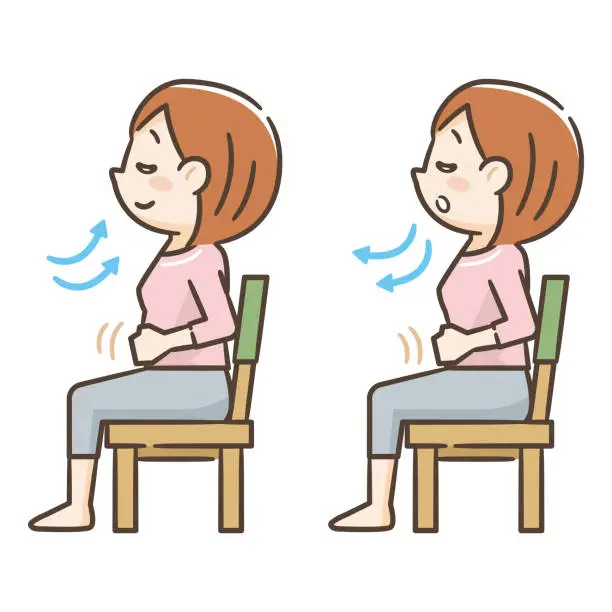
- With your knees bent and your shoulders, head, and neck relaxed, take a comfortable seat.
- Put one hand right below your rib cage and the other on your upper chest.
- This will make it possible for you to feel how your diaphragm moves while you breathe.
- Take slow, deep breaths through your nose until your stomach pushes against your hand.
Core Muscle Isometric Muscle Contraction
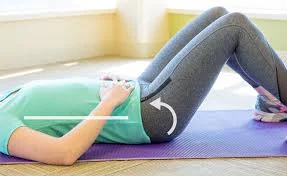
- The abdominal bracing
- Flex your knees and lie down on your back.
- Pull your abs in towards your spine.
- Hold for ten seconds, then breathe diaphragmatically.
- One set of ten repetitions, two sessions a day, one set per session
Alternate Leg Marching

- Flex your knees and lie down on your back.
- Elevate each leg 12 inches while maintaining core bracing.
- Work slowly, switching between your left and right legs.
- One set per session, two sessions per day, with ten repetitions on each leg.
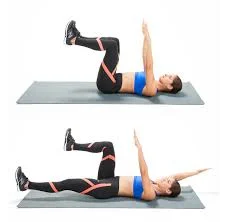
Dead Bug
- Place your legs and hips in a 90-90 posture while lying on your back.
- While extending each leg slightly, perform abdominal bracing.
- Work slowly, switching between your left and right legs.
- Two sets of ten repetitions on each leg.
Partial Sit-Up
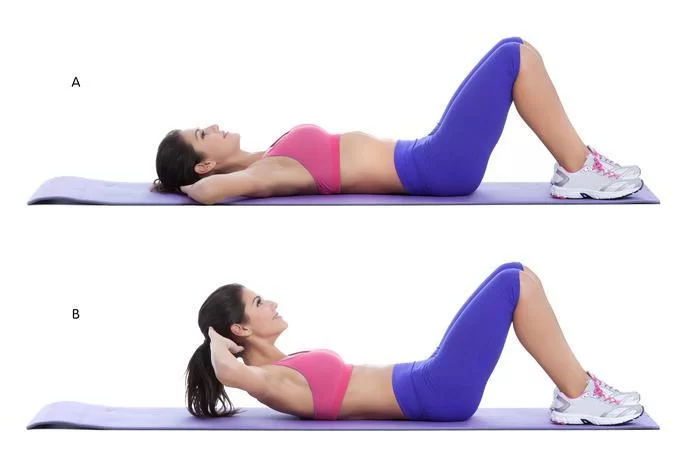
- With your hands on your thighs and your knees bent, lie on your back.
- Pull your upper back off the ground, tighten your abs, and slide your hands up your thighs.
- For two seconds, maintain the raised posture.
- Maintain a fist-width gap between your chin and chest to keep your head neutral.
- (When available and ready) Cross your arms across your chest to complete the exercise.
- For each of the legs, two sets of 10 repetitions
A Single Knee Press
- Flex your knees and lie down on your back.
- Flex your abs and raise your leg to a 90-90 posture.
- Lightly press your hands against your lower thigh while maintaining the leg’s motion.
- Hold for 5 seconds, then perform 10 repetitions on each leg, one set per day.
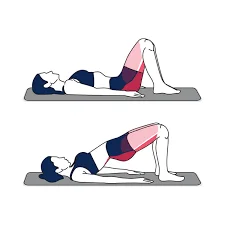
Partial to Full Briging
- On your back, curve your knees and position your feet flat.
- Lift your buttocks and hips 1–5 inches off the ground while tensing your abs.
- Hold for five seconds before lowering your buttocks to the ground.
- As tolerated, you may progress to 10-second holds.
- Complete one set of ten repetitions each day.

Bridging with Exercise Ball
- Lie on your back with calves on the ball and hands at your side
- Tighten your abs and elevate your hips and buttocks without discomfort.
- Hold for two seconds, then slowly lower the buttocks to the floor.
- Perform 10 repetitions every set, one set per day.
Alternating Arm and Leg Raise
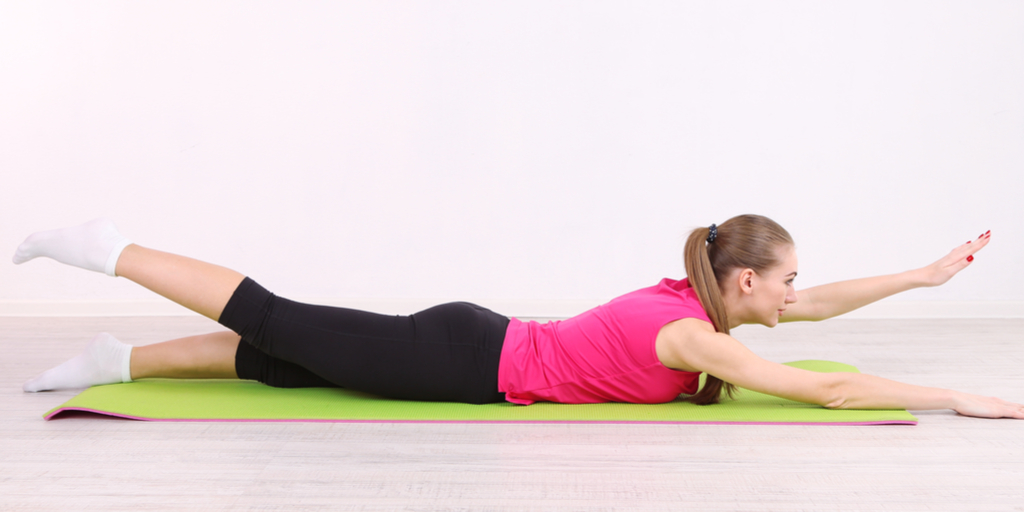
- Lying down on your belly, with a cushion under your hips.
- Tighten the abs and gradually alternate raising opposing arms and legs.
- Hold for one second (don’t hyperextend the spine).
- 10 repetitions on each side every session, one set per day.
Alternating arm and leg Raise using an exercise ball.
- Lying down on your belly on the exercise ball.
- Tighten the abs and gradually alternate raising opposing arms and legs.
- Hold for one second (don’t hyperextend the spine).
- 10 repetitions on each side every session, one set per day.
Hands and knees alternate Leg Raise
- Assume hands and knees posture, with hands under shoulders and knees under hips.
- Tighten your abdominals and carefully elevate your leg.
- Hold for one second, then alternate right and left legs.
- Perform 10 repetitions for each leg every set, one set per day.
Hands and knees alternate with the opposite arm and leg Raise

- Assume the hands and knees posture.
- Tighten the abs while extending the opposing arm and leg.
- Hold for 1 second before slowly alternating between sides.
- 10 repetitions on each side every set, with one set per day.

Standing Hamstring Strech
- Stand with one heel on the step (holding the edge of the rail if necessary).
- Slowly lean forward from your hips (not your spine) until you feel a slight stretch at the back of your leg.
- Maintain for thirty seconds.
- 3 repetitions per leg each set, one set per day
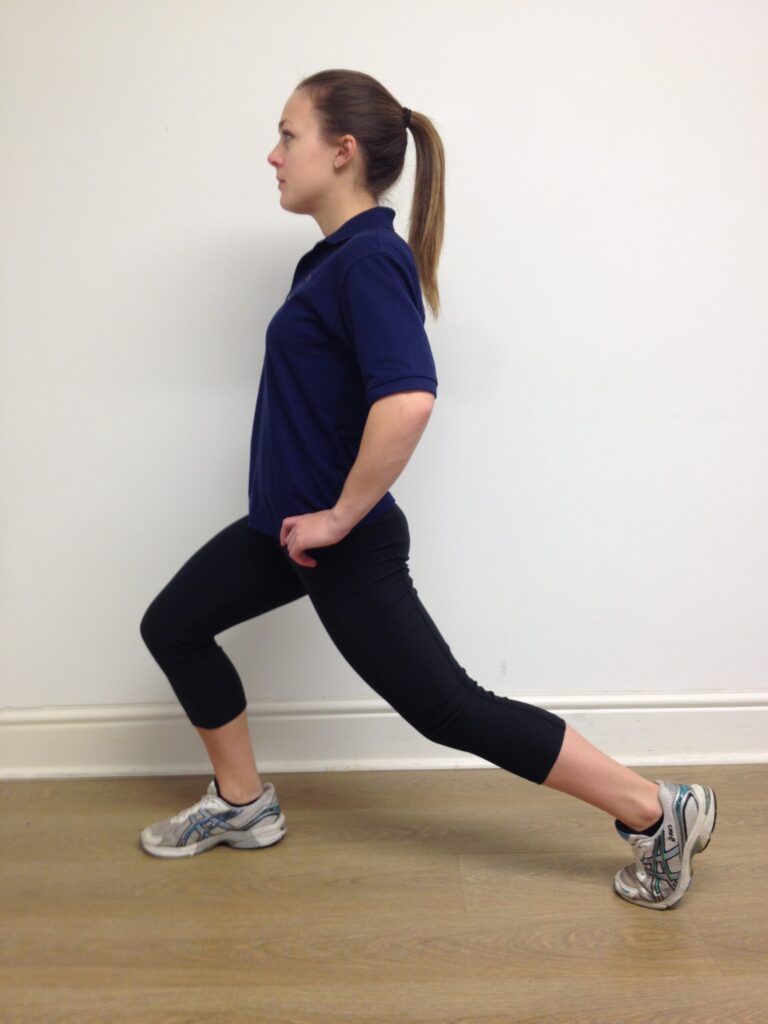
Standing Hip Flexor Stretch
- Grasp onto the railing and stand with one leg forward and the other back. Bend the knees.
- Keep the legs shoulder-width apart.
- Stay straight and tuck your tailbone under until you feel a stretch at the front of the hip and thigh of the rear leg.
- Hold for thirty seconds.
- 3 repetitions per leg each set, one set per day
Corner Strech
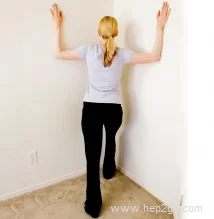
- Stand in a corner, one leg forward and the other back.
- Bend the knee of the front leg.
- Place palms, forearms, and elbows on the wall at a 90-degree angle to the shoulder.
- Lean forward until you feel a slight stretch in your chest and shoulders.
- Hold for thirty seconds.
- 3 repetitions per leg each set, one set per day
Wall squats using an exercise ball.
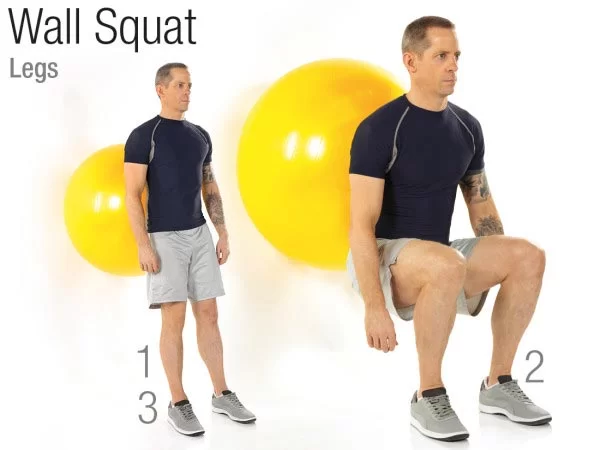
- Stand with an exercise ball behind your back against a wall.
- Step forward to ensure knees are aligned with ankles.
- Tighten abs and bend knees into a squat stance (knees should not extend beyond toes).
- Maintain an upright chest and go to a 90-90 posture at the hip and knee, holding for three seconds.
- Perform 10 repetitions every set, one set per day.
Aerobic Activity
- Aerobic conditioning should also be done regularly (5-7 times per week) through low-impact exercises such as walking, biking, water aerobics, or water walking.
- Water aerobics and water walking are great total-body training exercises that reduce stress on the lower limbs and spine.
- Other low-impact choices include stationary riding, elliptical machines, and rowing machines.
- Aerobic activity has been demonstrated to minimize the occurrence of low back pain, keep us functioning, and boost the body’s pain-relieving chemicals known as endorphins. Start with 10-minute sessions and progress to 30-minute sessions.
FAQs
How long does it take for core muscle injuries to heal?
Depending on the severity of the damage and the type of surgery performed, complete recovery might take 3-8 weeks or even longer.
How can you treat a core muscle injury?
Treatment always begins with conservative approaches. This involves rest, activity moderation, anti-inflammatory medicines, and physical therapy. If those are effective, you may begin a fitness program focusing on stretching and strength to avoid another CMI.
How long does it take to recuperate after core surgery?
Previous medical history might also be a factor. However, most athletes (professional or otherwise) may return to sports within 3 to 12 weeks post-surgery.
What is the treatment plan for a core muscle injury?
Anti-inflammatory drugs.
Physical treatment to improve core stability.
Therapeutic injections and treatments.
Acupuncture.
Heat and ice therapy.
Yoga.
Massage Therapy.
References
- Core muscle repair | Megan Wolf, M.D., Orthopedic sports medicine specialist, Greater Winston-Salem and Wilkesboro, NC. (n.d.). https://www.meganwolfmd.com/core-muscle-repair-orthopedic-sports-medicine-specialist-winston-salem-nc/
- Q Digital Studio. (n.d.). Abdominal Core Surgery Rehabilitation | Abdominal Core Surgery Rehabilitation | ACHQC. https://achqc.org/patients/abdominal-core-surgery-rehabilitation
- Core Stabilization Program – Peak Sport & Spine. (2020, April 28). Peak Sport & Spine. https://peaksportspine.com/core-stabilization-program/
- Exercise to improve your core strength. (2023, August 25). Mayo Clinic. https://www.mayoclinic.org/healthy-lifestyle/fitness/in-depth/core-strength/art-20546851

